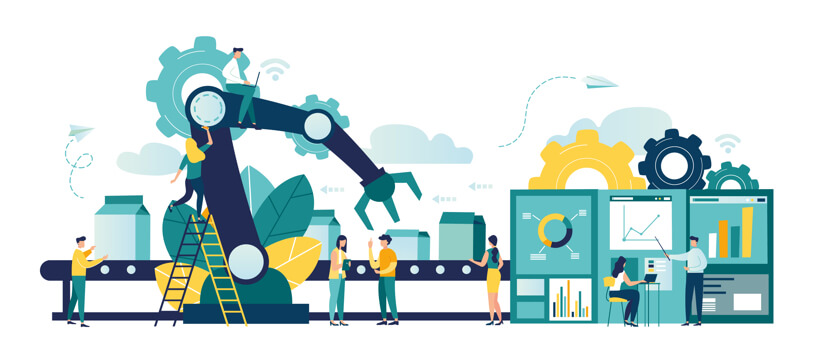Harnessing interoperable technologies to facilitate end-to-end automation
Improving business processes to fund the future of NSW

Emma Dahms
Director – Digital Taxes
Revenue NSW
Making things easier and more efficient
Large organisations with complex but monotonous processes, are always on the hunt for methodologies to make things easier and more efficient for their employees. Often, this has benefits for their customers too. Emma Dahms , the Director of Digital Taxes at Revenue NSW, says that for the last few years, they have been in the process of “replacing some of the repetitive and boring activities with activities that allow our people to be more focussed on servicing our customers in better ways.”
For an organisation like Revenue NSW, this is a particularly important thing to be focussed on, particularly since they are the state’s main revenue management agency, “responsible for $27 billion of the state’s revenue in 2019/20, or about a third of all NSW finances.” They operate in five locations across the state and regularly look for ways of automating processes whilst also ensuring consistency across their five offices. Using robotics is one way of doing that, but in essence, robotics is part of “a broader suite of hyper-automation that also includes system to system integration across the organisation,” all of which is designed “to add business value.” At Revenue NSW, that value has been in the “reduction of friction within the organisation for our staff, and in the provision of better front-end experiences to our customers.”
The value has been provided through micro-services, which is a “buzz word that defines different types of integration.” It is these micro-services that “allow for increased uptime and better delivery in a faster fashion.” They are ‘micro’ because they are “small, reusable connectors and transformers that enable data to be shared and transformed. Once you’ve used a micro-service, you can connect other systems to it,” without having to start again each time. The benefit of this is that it allows “functionality to be delivered in just a few hours, as happened during COVID,” subject to customer needs and privacy obligations. This means that the benefits have “been significant” and will continue to be so.

"
“All in all, we’re taking out some of the more routine data entry activities. We understand where the opportunities are, and where the benefits to the organisation and customers are. We’re doing all this to deliver the best outcomes for customers and staff, in a timely fashion, making the focus less on repetitive tasks and more about the value adding services that can be offered to our customers.”
Using robotics
Robotics, through robotic process automation (RPA), is an important part of the suite of hyper-automation, though “not a standalone function.” It is tied to other parts of the operation, though RPA is particularly useful because it “provides a clear set of instructions that are defined by the robot to process large amounts of data which traditionally would have been keyed in.” However, it is not a process of set and forget. “We have a human in the loop as well.” People check the process and the outputs and make sure everything is working. Even with human oversight, RPA still “reduces the mundane and repetitive tasks, and it also increases error-free processing, particularly for high volume transactions.” Also as part of the robotic ecosystem, Revenue NSW is currently looking at “chat-bots, machine learning and intelligent optical character recognition,” to read papers and make things even easier.
Before robotics, “staff were manually checking external data sources” like names and dates of birth, and had to manually make corrections and merge any data. Now, using RPA, “we run an analytics suite, a bot updates the client details and our systems then merge the records.” This has allowed “300,000 client records to be updated robotically, and has saved us 26,000 hours in effort.” Rather than processing data, this has meant that “our staff can now focus more on servicing clients and dealing with more complex inquiries.”
Integration and automation have been used in other parts with Revenue NSW too. For instance, in the area of bank accounts, “we’re supplying a service that allows for the creation and balancing of journal entries, automation of bank statement downloads, reconciling balances and transactions in our finance system, and noting and referring any discrepancies.” In the lead up to the end of the financial year, there are always financial closes that need to happen, “so we’re putting robots in to make sure our sub-ledgers are reconciled, and our various data sources are consolidated.” In terms of general data management, “we’re aggregating, updating and analysing client records, and performing entry updates to merge the records. We’re also conducting compliance reviews and producing exception reports.”




















